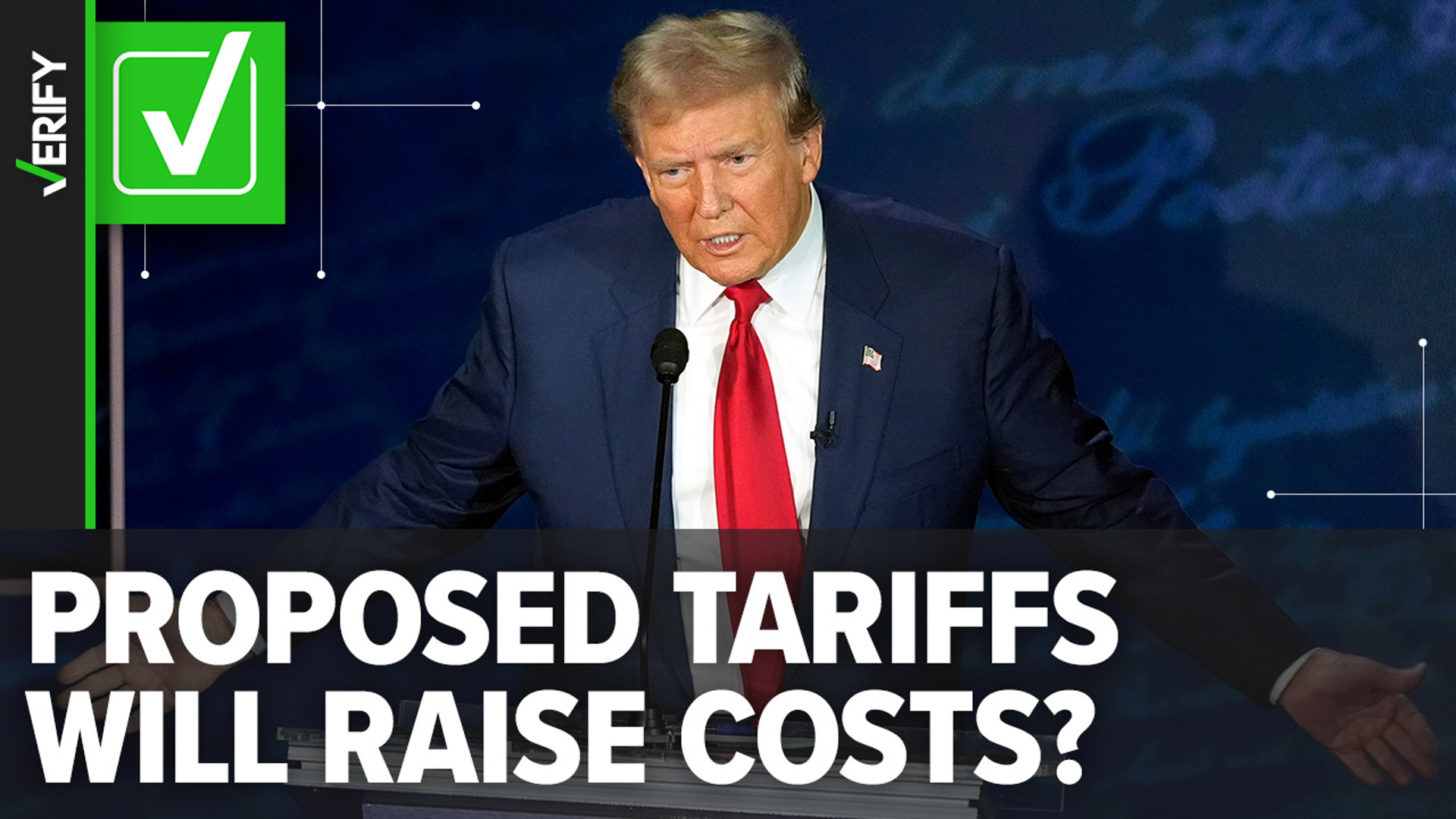Aritzia And The Trump Tariffs: How The Brand Is Adapting

Table of Contents
The Impact of Trump Tariffs on Aritzia's Supply Chain
The Trump administration's tariffs, particularly those targeting goods imported from China, significantly impacted Aritzia's production costs. Aritzia, like many fashion retailers, relied heavily on Chinese manufacturing for a significant portion of its clothing and accessories. The increased import tariffs on these goods directly translated into higher costs across the board.
- Increased cost of materials: The tariffs added a substantial percentage to the cost of fabrics, trims, and other raw materials sourced from China, impacting Aritzia's manufacturing costs.
- Higher prices for consumers: To offset the increased input costs, Aritzia, like many other businesses, had to consider passing some of these increased costs onto consumers through price increases.
- Potential decrease in profit margins: The higher costs and potential consumer resistance to price hikes squeezed Aritzia's profit margins, necessitating a strategic response to mitigate the financial impact.
- Supply chain disruptions: The tariffs also introduced complexities and delays into Aritzia's supply chain, creating uncertainty and potentially affecting timely delivery of products.
These tariffs specifically impacted Aritzia's clothing lines, encompassing everything from sweaters and outerwear to blouses and accessories. While precise figures regarding the financial impact on Aritzia remain undisclosed, it's evident that the increased import tariffs significantly increased manufacturing costs and created substantial challenges within their established supply chain. The effects were felt throughout the industry, with many brands struggling with increased clothing tariffs and heightened manufacturing costs.
Aritzia's Strategic Responses to Tariff Challenges
Faced with the significant challenges posed by the tariffs, Aritzia implemented several strategic responses to mitigate the negative impacts on its business. These included:
- Diversification of sourcing: Aritzia actively sought alternative manufacturing locations outside of China, diversifying its supply chain to reduce reliance on any single country. This involved exploring production opportunities in other countries with more favorable trade agreements.
- Price adjustments: While aiming to minimize price increases for consumers, Aritzia strategically adjusted pricing on some items to offset a portion of the increased tariff costs. The company likely prioritized maintaining margins on its highest-demand items.
- Improved inventory management: To minimize losses from potential supply chain disruptions and fluctuating demand, Aritzia likely implemented more sophisticated inventory management techniques, optimizing stock levels and forecasting demand more effectively.
- Negotiations with suppliers: Aritzia actively engaged in negotiations with existing and potential new suppliers to explore cost-saving measures and secure more favorable pricing agreements. This included leveraging their buying power to negotiate better terms.
These cost-cutting measures and supply chain diversification strategies formed the core of Aritzia's tariff mitigation plan, demonstrating a proactive approach to navigating the challenges. The effectiveness of these strategies is evidenced by Aritzia's continued success and resilience in the face of considerable market disruption.
The Long-Term Implications for Aritzia's Business Model
The experience of navigating the Trump tariffs had lasting effects on Aritzia's operations and long-term strategic planning.
- Changes in pricing strategies: The experience likely refined Aritzia's pricing strategies, leading to a more nuanced approach to balancing profitability with consumer affordability.
- Long-term relationships with suppliers: Building stronger and more diverse relationships with suppliers became crucial for mitigating future risks and ensuring consistent supply.
- Enhanced supply chain resilience: Aritzia's diversified sourcing and improved inventory management have significantly enhanced its supply chain resilience, making it better prepared for future disruptions.
- Increased focus on sustainability and ethical sourcing: The tariffs may have inadvertently encouraged Aritzia to prioritize more sustainable and ethical sourcing practices, as diversification often entails exploring suppliers with stronger environmental and social responsibility commitments.
- Potential for greater domestic manufacturing: Although not explicitly stated by Aritzia, the experience may have spurred explorations of increasing domestic manufacturing, which could provide greater control over the supply chain.
These changes showcase Aritzia's commitment to business resilience and highlight the long-term strategy adopted in response to the challenges posed by the tariffs. The enhanced supply chain and operational efficiencies contribute to a more sustainable and competitive Aritzia future.
Lessons Learned and Industry-Wide Impacts
The impact of the Trump tariffs extended far beyond Aritzia, affecting the entire fashion industry. The experience provided several valuable lessons:
- The need for flexible supply chains: The tariffs highlighted the critical need for fashion retailers to develop more flexible and diversified supply chains, reducing dependence on single sourcing locations.
- Importance of proactive risk management: Businesses learned the importance of proactive risk management strategies to anticipate and mitigate potential disruptions stemming from global trade policy changes.
- The role of government policy in international trade: The tariffs underscored the significant influence of government policy on international trade and the need for businesses to closely monitor geopolitical events and trade regulations.
Aritzia's successful navigation of this period offers valuable insights for other fashion retailers. Their strategic responses, combining diversification, price adjustments, and enhanced supply chain management, served as a model for adapting to changing global trade dynamics. These responses highlight best practices in retail strategy and risk management within the fashion industry trends.
Conclusion
Aritzia's response to the Trump tariffs demonstrates impressive adaptability and resilience. The tariffs created substantial challenges, impacting their Aritzia supply chain and increasing manufacturing costs. However, through strategic diversification, refined pricing strategies, and improved inventory management, Aritzia successfully mitigated the negative consequences. The long-term implications include a more resilient supply chain, strengthened supplier relationships, and a greater focus on sustainability. The lessons learned from this experience are valuable for other businesses facing similar challenges in the global fashion market. Learn more about how other fashion brands are adapting to global trade challenges and the ongoing impact of tariffs on the retail industry. Continue reading about Aritzia Trump Tariffs and similar cases for insightful analyses into business resilience and strategic planning.

Featured Posts
-
 Canelo Vs Crawford The Ultimate Boxing Showdown After Mayweather
May 05, 2025
Canelo Vs Crawford The Ultimate Boxing Showdown After Mayweather
May 05, 2025 -
 Resultado Final Novorizontino 0 1 Corinthians Detalles Del Encuentro
May 05, 2025
Resultado Final Novorizontino 0 1 Corinthians Detalles Del Encuentro
May 05, 2025 -
 Wiener Duo Esc Teilnahme Fuer Deutschland Mit Abor And Tynna
May 05, 2025
Wiener Duo Esc Teilnahme Fuer Deutschland Mit Abor And Tynna
May 05, 2025 -
 Robertson Vs Rodriguez Ufc Des Moines Fight Preview And Prediction
May 05, 2025
Robertson Vs Rodriguez Ufc Des Moines Fight Preview And Prediction
May 05, 2025 -
 Heavyweight Battle Bakole Vs Ajagba On Canelo Alvarezs Undercard May 3rd
May 05, 2025
Heavyweight Battle Bakole Vs Ajagba On Canelo Alvarezs Undercard May 3rd
May 05, 2025
